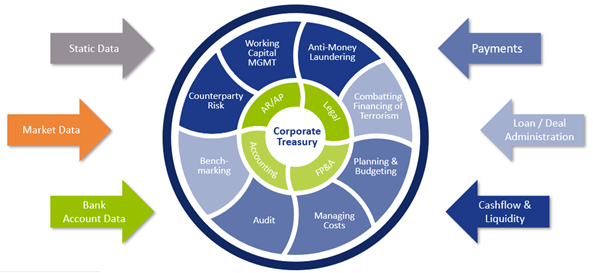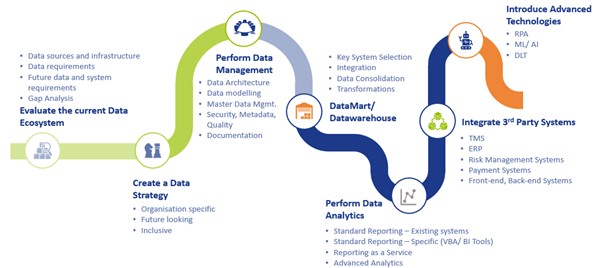A transfer to a new system is usually a complicated and time-consuming process. This particularly rings true for a company like GlobalCollect, which processes hundreds of thousands of online transactions for banks all over the world on a daily basis. How did this payment service provider (PSP) tackle the complicated challenge of adopting SWIFT as its new system?
In 1994, the current GlobalCollect was set up as a division within the old TPG Post company to ensure a well-organized payment system for parcel deliveries. Back then it was dealing with offline payments, such as cash on delivery, but when digitalization took off, the postal company decided to go online with its payment services. Now, GlobalCollect is a fast-growing company, independent of TPG Post, which processes worldwide online payments for retailers operating internationally. This PSP offers them one platform so that they do not have to deal with the complexity of various foreign banks and their payment systems.
Connections and conversions
Michael Roos, vice president of merchant boarding at GlobalCollect, says that the market for PSPs has quickly become ‘professionalized’. “The industry has developed enormously over the past 10 years, also as far as legal and statutory regulations are concerned. We fall under the supervision of the Dutch central bank, De Nederlandsche Bank, and are affected by the EU’s Payment Services Directive (PSD). Companies who conduct business abroad, such as airlines or online retailers, need to receive payments from abroad. That adds to the complexity as it is a huge challenge setting up all the connections. You not only have to deal with the local banker, but also with all sorts of foreign banks.” A PSP not only has all those necessary local connections but is able to offer the client various payment methods via one point of access. “As a company you then have not only the local payment method, such as iDeal in the Netherlands, but also those in other countries where you have customers.”
Since GlobalCollect processes many millions of transactions each month, it is able to compete on price – something a single company cannot do with only several hundred transactions. Customers enjoy a more favorable rate – despite working with an intermediary – than they would with a bank. Besides dealing with the complexity of connections, GlobalCollect’s clients enjoy large-scale benefits for other services, such as currency conversion. “Collection of foreign currency can be outsourced,” Roos adds. “If you get paid in Brazilian real, which is not freely convertible, we do the conversion. Clients then have quicker access to their money in their own currency.”
New for corporates
When GlobalCollect was starting up, it began with a few bank interfaces. “But after about 15 years we had more than 50 interfaces within an out-of-date infrastructure. In order to bring this infrastructure up to a technological standard that was market compliant, we decided that SWIFT was the best solution. But to get started we didn’t have the required know-how and manpower. So when we looked around for a company with plenty of expertise we hit on Zanders. I had spoken to Sander van Tol about three or four years ago and remembered that Zanders knew a lot about SWIFT. In the spring of 2012 I met Jill Tosi and in October the project kicked off.” Zanders taught GlobalCollect about the possibilities and impossibilities of SWIFT. “And Zanders was the right choice,” says Roos. Originally, SWIFT was a connectivity channel for banks, and since 2000 it has also become available to corporates. When GlobalCollect decided to start using SWIFT’s Alliance Lite2, a new cloud-based SWIFT communication tool, it was new to the market. Roos says: “As one of the first adopters, we were working with a completely new SWIFT system.
The interfaces particularly were new and unknown.” GlobalCollect’s reason for acquiring SWIFT was twofold. On the technical side, the number of interfaces had to be reduced. On the other hand, SWIFT had to standardize formats and the provision of information. Roos adds: “In order to be able to profit from the systems we had to have good information. Good information is standardized in IT, and so we ended up with SWIFT. The way information was shared with banks had to be standardized as much as possible. This was our starting point with a kick-off on various workflows.”
Fully-fledged tool
The challenge for GlobalCollect was mainly in connecting to banks. The old interfaces had to be replaced with new ones. Whereas SWIFT has everything standardized, it appeared that the banks did not. Roos explains: “Banks who want to connect via SWIFT each send their own technical implementation document; where one sends a single Excel-sheet with technical details, another sends a 20-page contract.” Roos noticed that SWIFT, banks, and corporations were not necessarily used to dealing with each other in this context. “Particularly outside of developed markets, the banks have not come that far yet and there is a good deal of indifference. This makes project-based work and estimation of turnaround times difficult. We approached a number of banks and looked to see which ones reacted the fastest and in the most professional way, and we started with them. This is not what you would normally do. I think we got off to a good start, but the migration path will take a number of months to complete.” The time required for testing individual connections and carrying out test cases can be very long. Roos says: “SWIFT is a fully-fledged tool and the parties used to working with it are large financial institutions. For us as a young, upcoming, dynamic industry, we really have to adapt to the banks – it’s a completely different culture.”
Change of format
With the huge amount of transactions involved, a transfer to another system is risky. “Therefore we ran the two systems in parallel during the migration,” he explains. “We also deliberately decided to link the largest parties first, leaving the legacy system running as we integrated SWIFT into the organization.” This means that a back-up is not necessary. “SWIFT is a unique system, with relatively large numbers of redundancy channels and recovery scenarios, so that it can guarantee unique processing.”
According to Zanders consultant Jill Tosi, this is because SWIFT is owned by the banks: “They have so much trust in their system that they assume responsibility for payments. SWIFT has such a robust system with minimal failure percentages, that customers can put complete trust in its information process.”
At the time of transferring to the new system, GlobalCollect had a lot of IT projects on the go. The SWIFT implementation was also part of a much larger project, Process Excellence, where several systems had to be modernized in order to meet market standards. “There was a lot of pressure on the IT department at GlobalCollect,” Tosi says. “The electronic banking systems were all stand-alone, i.e. not integrated into the daily processes. There were about 50 electronic banking systems, and someone had to log into each one separately with a different token each day. For one or two that is feasible, but 50 is too many.” And Roos adds: “The whole idea was to continue with significantly fewer interfaces – preferably one. And we are still very busy with that.”
While GlobalCollect was carrying out the migration to the new system, the banks were right in the middle of the SEPA migration. “That had consequences for the introduction of new formats within SWIFT,” Roos says. “We had to make a decision: do we go for MT940, the old standard for bank statements, or do we go for CAMT 053, the XML-successor of MT940? XML is a future-proof format but is not offered by all banks. As a consequence of SEPA, some banks will have to be migrated twice: firstly to MT940 and then to XML. An interesting aside is that where SWIFT offers the version 2.0 solution to corporations, many banks are just not ready for SWIFT connectivity with businesses. A number of large Anglo-Saxon banks have indicated that MT940 interfaces are not yet available for a direct connection to SWIFT Alliance Lite2 with corporates.”
Business as usual
The SWIFT migration to large banks is over and this year other banks will follow. After the first three banks, Zanders withdrew from the process. "It is now more like business as usual,” says Roos. "Zanders not only did the implementation, but was also responsible for the learning curve in our company. We have become self-supporting as far as SWIFT is concerned.” After the SWIFT project, Zanders also helped GlobalCollect with the selection and implementation of a new treasury management system (TMS) and a reconciliation tool. "Messages coming from SWIFT could be uploaded to our TMS straight away,” Roos says. "The same goes for our reconciliation system. If we didn’t have the standardization of the SWIFT system, it would have been much harder. In the banks’ own technical file formats there is a degree of standardization, but it’s not complete. It is clear to us that getting the standard functionality working would not have been possible without the successful implementation of SWIFT Alliance Lite2.”










































